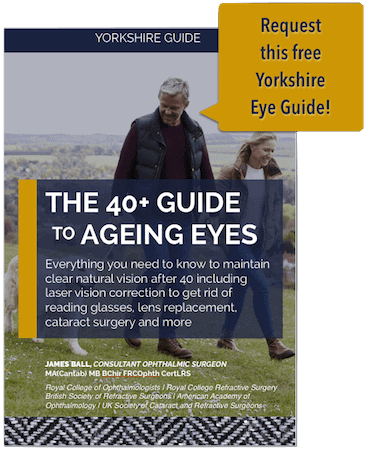Cataract surgery: What is James Ball’s experience in cataract surgery?
What’s my experience with cataract surgery? It’s been an incredible journey. My friends who are non-medical, in fact, even my friend from medical school who became orthopaedic surgeons gastroenterologist, they don’t understand my relationship with cataract surgery. It’s a relationship that’s lasted over 20 years because I knew that I wanted to be an eye surgeon when I was a 21-year-old undergraduate at Cambridge.
I was incredibly excited the first time that I saw a cataract operation and when I began to learn the steps. I completed my first cataract operation in 1997. This was 20 years ago now, so I have done a lot of them. I was incredibly fortunate in my first ophthalmology job at the Sussex Eye Hospital in Brighton. I had amazing teachers who were the forefront of the revolution that had taken place in cataract surgery technique.
That revolution was in the mid-nineties, with the introduction of phacoemulsification. This was a completely new way of performing surgery. Up until then, it had been a large incision in which the cataract itself was prolapsed out of the eye, the lens placed and then the large incision stitched up. With phacoemulsification, we are using a small ultrasound probe introduced through a tiny incision and a series of delicate manoeuvres to liquefy and break up that cataract and aspirate it through that tiny port. It’s a completely different skill.
There were many surgeons who retired at that time because they were there in their fifties and were struggling with learning a whole new set of skills. I was very fortunate to be working with the doctors who already embraced that technology within a year of my training. I was able to operate independently. Albeit I was given understandably the more straightforward cases, but nevertheless I had my own Mr James Ball cataract list a year into my training.
What that meant when I moved on to other hospitals later my training is that I occasionally found myself teaching the teacher. So on one occasion, I found myself working with a surgeon who was brilliant at performing the old-fashioned cataract surgery but was just learning the new technique of cataract surgery. During that six months, he was helping me develop the old-fashioned techniques so that I know all those. I’m one of the few surgeons operating who know how to do all the old-fashioned cataract operations extracapsular, and I’ve even performed intracapsular cataract surgery. But also I was teaching him how to perform modern small incision phacoemulsification cataract surgery. That was an extremely valuable learning experience, which allowed me to become a teacher quite early on in my career for the junior ophthalmologist following on behind me when I was a registrar.
When I was four years into my training, I realised that I’d mastered all the techniques to treat all the different kinds of cataract surgery, so I decided to teach myself to become ambidextrous. So I was a right-hand cataract surgeon, and I developed a program for myself to learn all that techniques left-handed, and I turn it into a teaching program at the Royal College at their annual meeting. That left me in a strong place for adjusting my incision depending on the patient’s anatomy. If the access was a little bit difficult, I just change hands. If I was teaching a surgeon who was left-handed, that was no problem I’d say for them to just set it all up for you to be comfortable and I can take over left-handed, that’s no problem.
Since that time I’ve been privileged to work as a consultant independently in Leeds teaching hospitals. One of Europe’s largest teaching hospitals. I inherited a very large complex anterior segment practice. Anterior segment is cataract surgery but everything around it. That practice involved operating on the most difficult cataracts. These are cases where other surgeons would say I don’t want to take this on because it is looking complex or difficult and they would refer to me. It’s a real privilege to look after these patients and see them through to a good outcome.
In more recent years I’ve been privileged to work with companies that have been developing refinements and new technologies in cataract surgery. For the last four years, I’ve been using the femtosecond laser for cataract surgery. We now have that technology at our NHS practice at St. Jame’s Hospital Leeds as well as in our private Hospital. That’s been very interesting. It hasn’t been a great leap forward such as the phacoemulsification surgery was, but it’s been an interesting technology and part of a continuing journey that I’ve enjoyed over 20 years.
Although it may sound a bit sad to my orthopaedic friends, I still love it. I still enjoy the surgery and most of all I still enjoy the impact that I see it has on people’s lives and the quality of their life after we’ve treated their cataract.
REQUEST A CALL BACK



